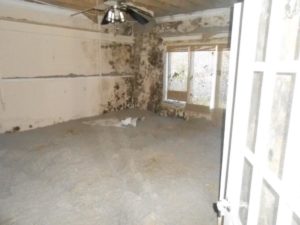 When it comes to homeowner’s insurance, most people assume that any damage is covered by insurance.
When it comes to homeowner’s insurance, most people assume that any damage is covered by insurance.
It makes sense.
Fires and floods are covered for the most part, and because mold can grow without you knowing of its existence and make your family sick, it’s understandable that most people think mold removal should be covered by your homeowner’s insurance.
Unfortunately, insurance very rarely covers mold removal. The homeowner has to specifically request mold coverage and even then the coverage amount is usually limited to a set dollar amount. The good news is that mold remediation is a lot more affordable than many people realize, so your budget might not take as hard of a hit as you first suspected.
Homeowner’s Insurance and Mold Removal
Insurance tends to be a little tricky in its wording for most policies, and unless you work in the field, it can often breeze over the coverage of certain situations without you even realizing.
Mold removal is one of those situations. The average homeowner’s insurance policy often covers what are called “covered perils.” These are instances considered out of the homeowner’s control, and examples are fires and forces of nature such as hail damage or tornadoes and floods.
When I began working in the mold industry, I assumed mold growth would be under the umbrella of covered perils. It can easily be caused by a flood, and it can also make you or others living in your house sick, and it can grow for a period before you ever realize it’s ever there.
Unfortunately, that’s not how the insurance companies view things. You’re expected to take care of your home and mold falls into that category. This means that even if the mold you find in your bathroom suddenly gets out of control, it’s your responsibility to remove it.
Even if this seems like an impossible feat, we have some tips on how to recognize the signs of mold when they first appear, and this may save you from a more substantial cost in the long run.
Signs of Household Mold
Household mold likes to be sneaky and show up in places you least expect it, but there are a few things to keep an eye out for to help you head off the problem before it gets out of hand.
Mold likes to grow in any area where there’s an excess of moisture. Common places are basements where any cracks in the foundation can allow moisture to seep inside as well as your attic where you might find unwanted leaks from your roof. Check any area where you have a water source like your bathroom or laundry room. Burst pipes can also lead to mold growth so if you’ve recently experienced this, check in and around the area.
Mold also needs a feeding source. Because mold isn’t picky when it relates to food, there isn’t a massive list of items that are considered off limits. Mold can feed on fabrics such as your curtains, carpets, rugs, and clothes, as well as old firewood, insulation, drywall, and more. Check rooms where you store any of these items for signs of surface mold.
Finally, mold has a very distinct smell. If you’ve smelled a musty smell recently in your home, there’s a good chance you have mold growing. Use your nose to try and locate the root of the smell. Check any cracks and crevices in the room for signs of mold.
Calling the Professionals
Mold growth and removal can be an overwhelming project to take up on your own, but that’s why we’re here. We have an entire team of certified professionals who can answer any questions you might have. Once we have a better idea of the situation, we can come up with an individualized plan that works for you and your family to get rid of the mold in your house and get you and your family back on track to a mold free home. Contact us today!







